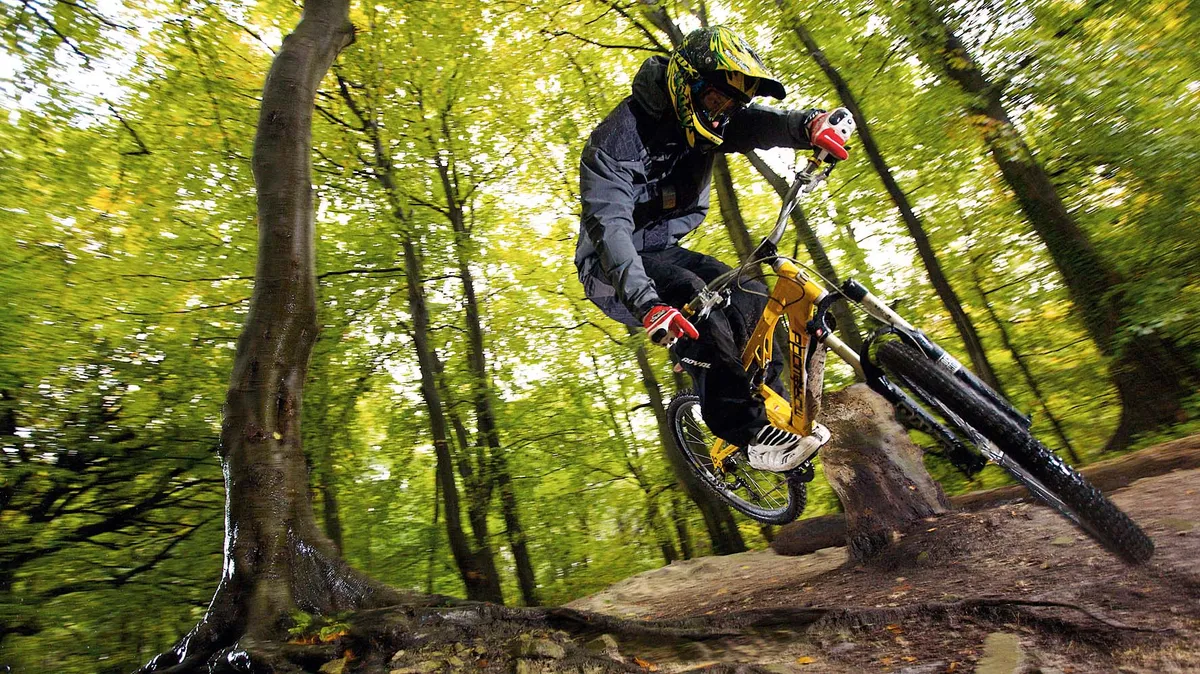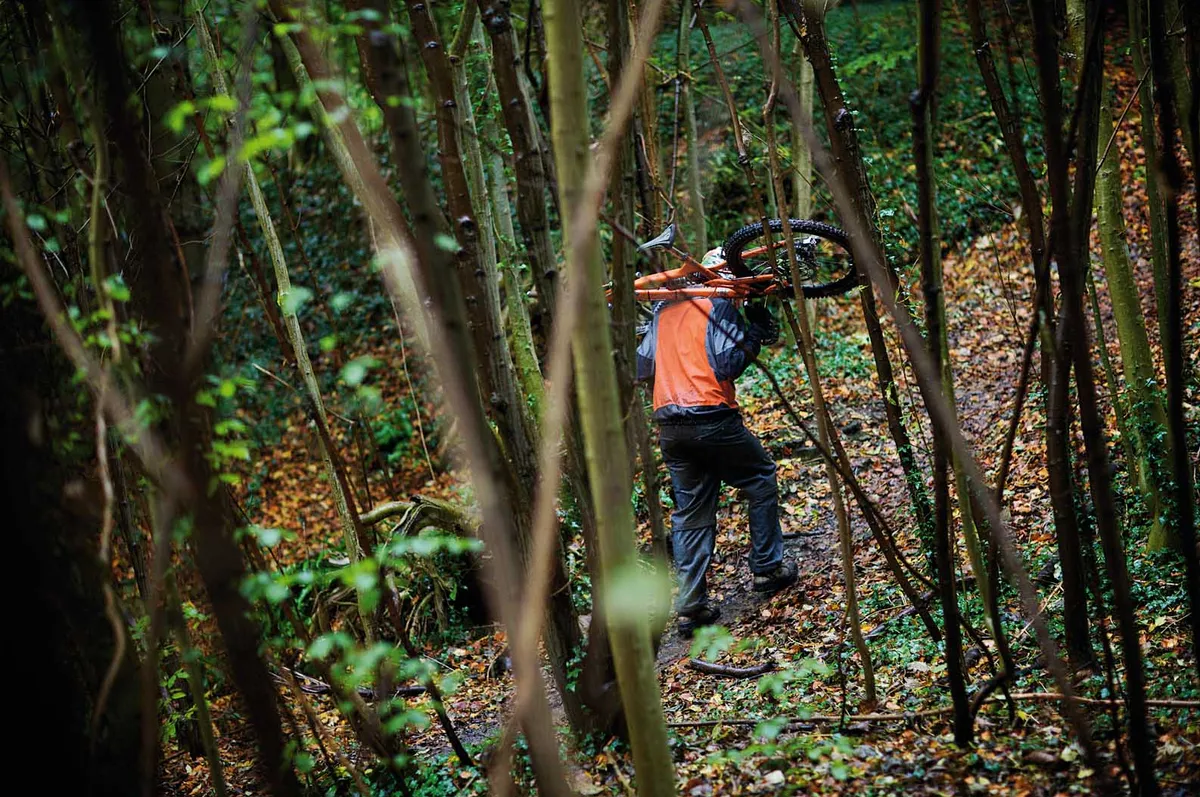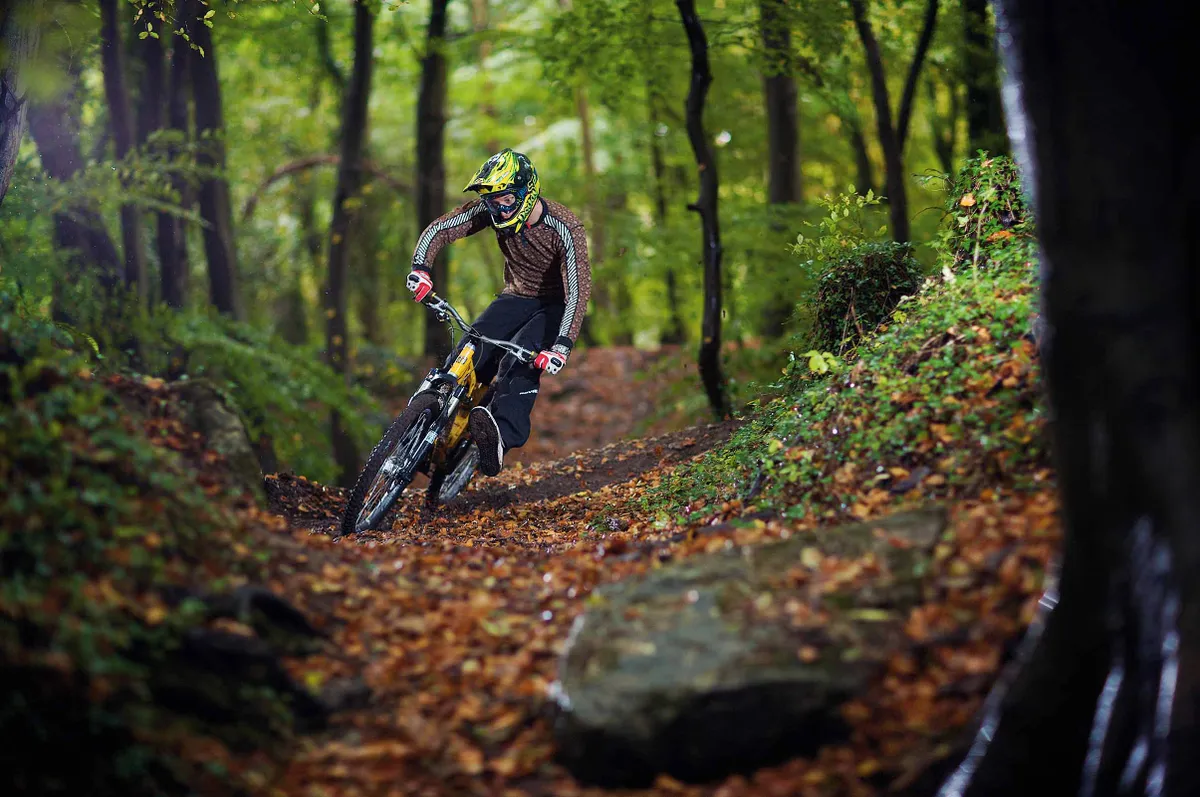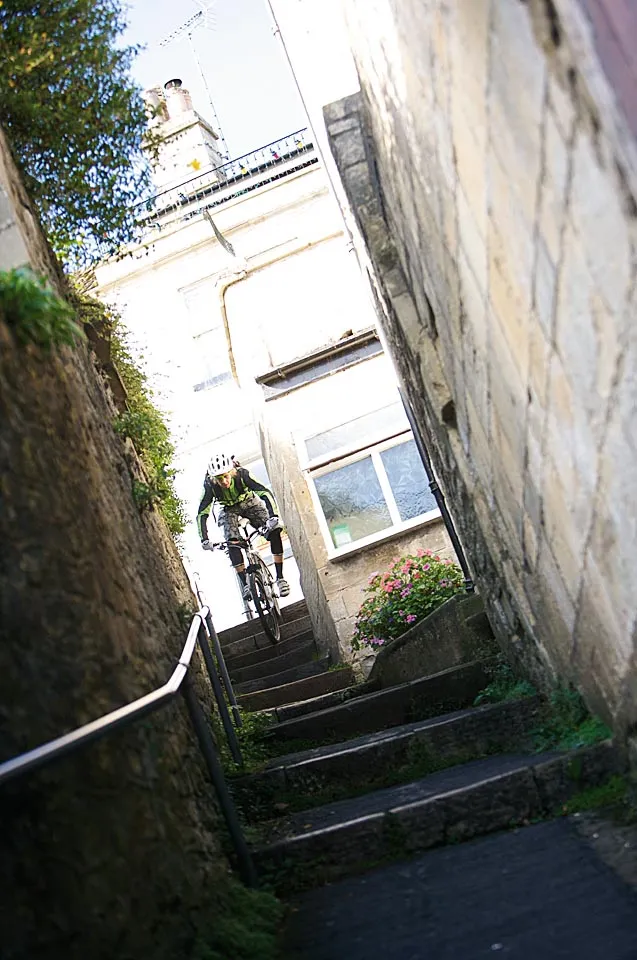We’ve looked at training methods to increase your fitness and power, now we concentrate on the fun bit – the riding. It’s simple really – the more you avoid rain, mud and slippery conditions, the worse you’ll be at riding in them. So don’t let the rain, wind, mud or cold stop you – use them to work on your skills and turn yourself into a finely-tuned machine by summer.
The ability to ride well in loose, wet and slippery conditions really does set you apart from other riders. It enables you to react quicker to changes in terrain and the terrain under your tyres – in any condition. One of the masters of wet weather riding, remarkably, is Sam Hill – the Aussie who doesn’t even see a raindrop back home in the off-season, his summer…
He’s totally destroyed the field in races in the past on steep, technical and wet courses – and he’s done it through hard work and dedication to training, not to mention confidence and sheer belief in his abilities. You can do the same with plenty of determination and a lot of riding.
Keep it simple, make it fun
The beauty of mountain bikes is that with a few modifications, one bike can pretty much do everything. So for downhill, for example, you could fit some flat pedals, a short stem and lower the saddle. When it’s grimy outside, you just need to get yourself some mud tyres and run your saddle a little lower than usual. Then you just need to strap on a Crud Catcher, get your riding togs on and get ready to surf the slop.
If you’re lucky enough to be able to afford a second bike, it’s worth looking at some kind of aggro hardtail because you can easily chop and change them for downhill, jumps, street riding, while being able to leave your regular rig free for general trail riding.
Five ways you can have fun riding through winter while improving your technical skills:
1. Car park trials
When the weather’s really rotten, head to the nearest covered car park and have a session there.
Use it as an opportunity to bring out some old school tricks like wheelies, stoppies, endos, rollbacks and track stands – this kind of riding builds balance and skill quickly. If the car park’s empty, then you can even have your own races. Try seeing who is quickest to the top and back, four-men head to head races – you get the idea.
2. Bombhole sessions
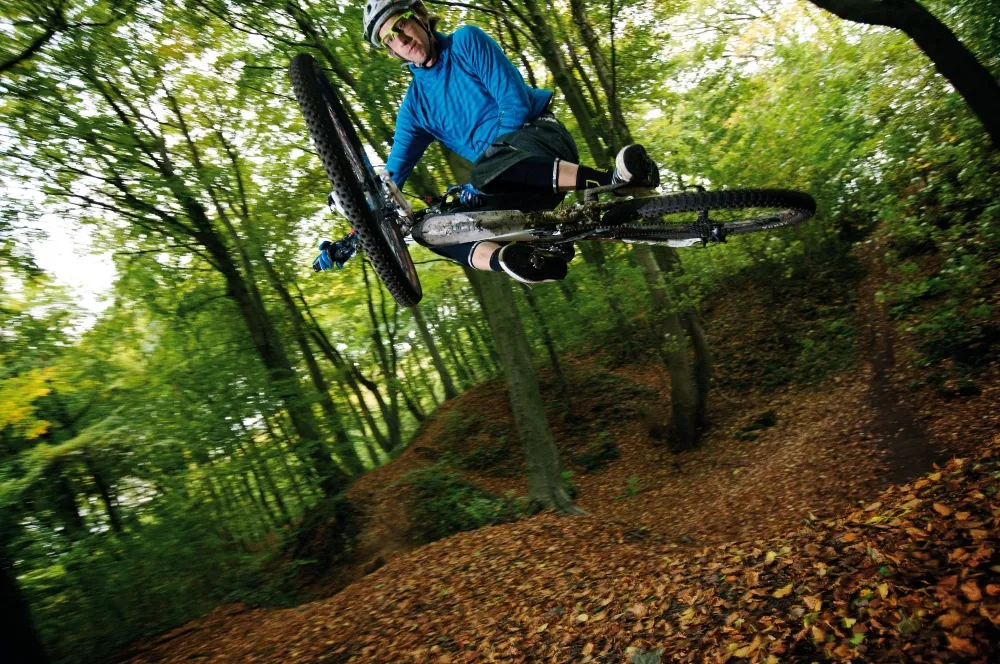
Instead of going for your regular cross-country ride, go out and find some woodland with undulating terrain littered with bombholes.
- Get your mates together, and spend the day charging round the woods
- Get air over the bombholes, jump off the banks and try riding up the steepest inclines you can find
- Play a game of follow-the-leader with your mates, except the riders following should be trying to overtake the lead rider
You’ll be amazed how hard you ride – a play ride with your mates can turn in to a full-on training ride without you realising. It will increase your strength and resilience and let you ride further, faster and more often – and have more fun.
3. Winter downhills
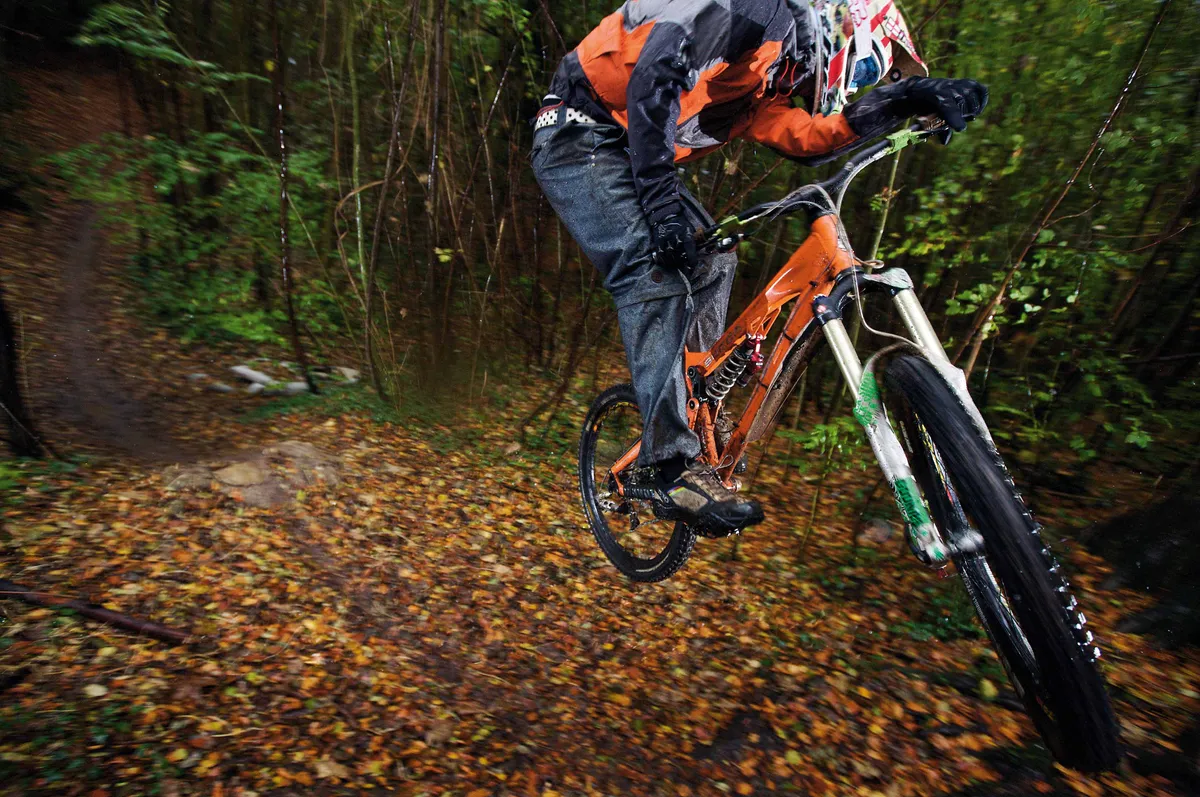
To improve your winter DH riding, find a section of trail that’s either steep and tricky, or fast and slidey, and session it.
- Look for the best lines, the worst lines and the scariest lines, and ride them all
- Scope your lines while you’re on the way back up for another run
- Don’t forget to pad up, because riding in wet conditions can be very unpredictable
Riding roots and rocks is really tough in the wet, but if you can master your technique and get through them in the wet, you won’t even think twice about doing it in the dry. Just try to hit the roots as square-on as possible, and look ahead to where you want to go.
Riding roots in the wet will also help you learn to let the bike go – when the rear wheel loses traction, don’t panic and counteract it. Go with the flow, let the wheel slide and counter-steer your way out of it. Sudden movements in the mud are likely to land you on the deck.
Treat mud like you would walking on ice – with slow exaggerated movements and a softly-softly approach.
4. Street riding
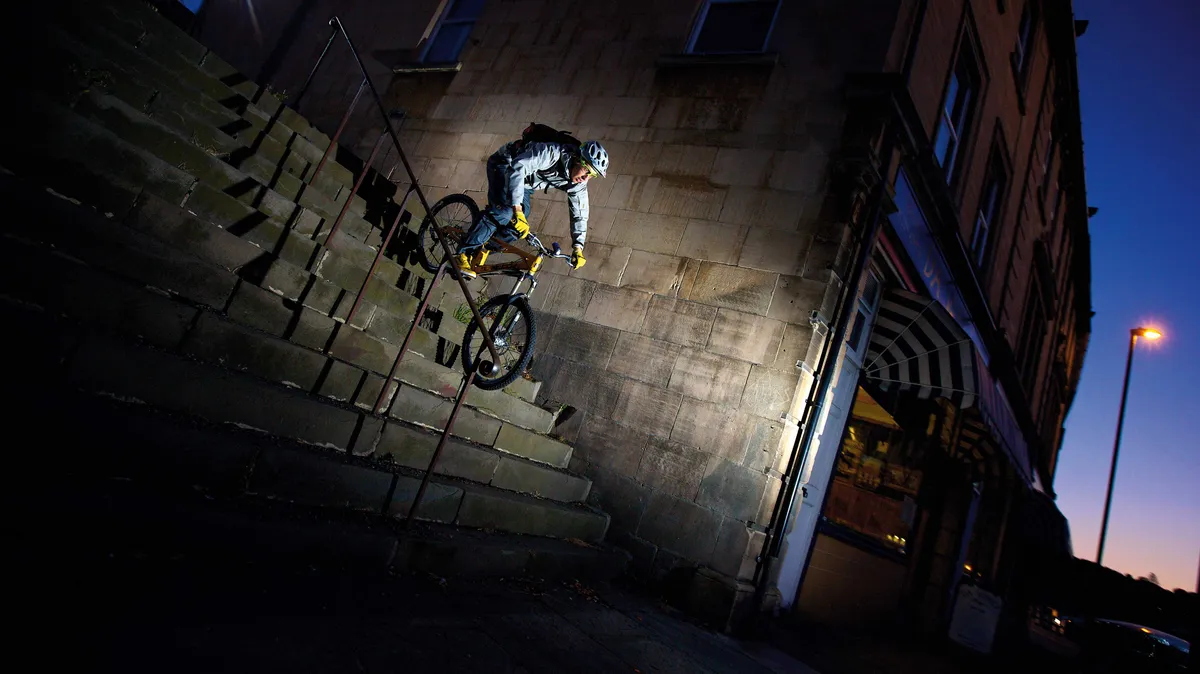
The concrete jungle is a great place to top up on your skills
Your commute to work is the ideal time to sneak in a training session, but instead of motoring your way there and back, focus on fitting in some more technical riding. Hit flights of stairs, bunnyhop up curbs, fit in some wallrides and manuals and so on.
Be creative and even plan out a little fun loop that takes you where you need to go. If you live near the top of town you could even make your own urban downhill to tackle on the way to work.
If you don’t fancy the trick side of things, concentrate on riding down stairs – you can treat them like slippery and rough root sections.
5. Winter hardtail riding

Full suspension bikes offer extremely high traction in rough and slippery conditions, because the wheels can stay in contact with the ground better. But getting out on a hardtail will force you to really ride properly. There’s no getting lazy, and there’s no getting out of it when things get a bit iffy. So forcing yourself out on a hardtail will challenge your riding and improve your skills.
For the best effect, tackle slippery and technical descents, as well as root-infested areas of woodland. You may feel like you’ve jumped in a bit deep, but persist and you’ll soon be ploughing through stuff fine. And when you get back on your full susser you’ll totally fly…
Try not to avoid certain areas you know will be challenging – in fact make a point of conquering them – it’s immensely rewarding when you do, and you’ll wonder why the heck you ever shied away from them before.
So get out and get wet. If you can practise your technical riding in the worst conditions, your skill levels will increase dramatically, and riding in dry conditions will seem a breeze. Obviously you’ll have to clean and inspect your bike more frequently, and your clothing will get properly dirty, but once you realise how much fun training in the mud is, you’ll be out in it all the time…
